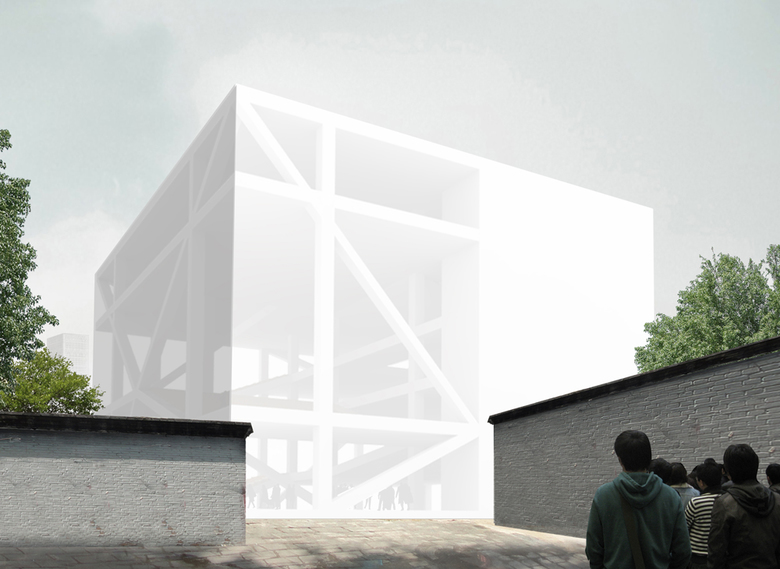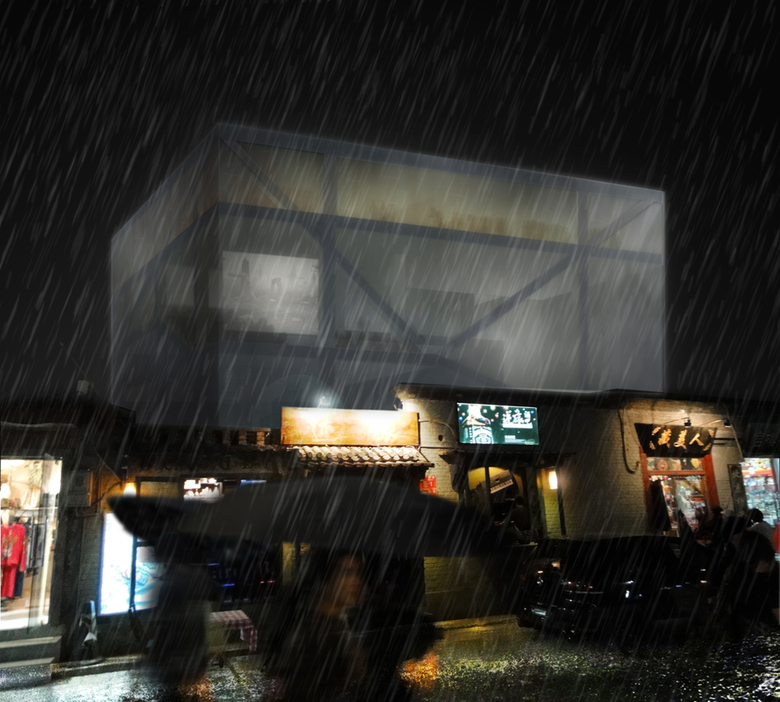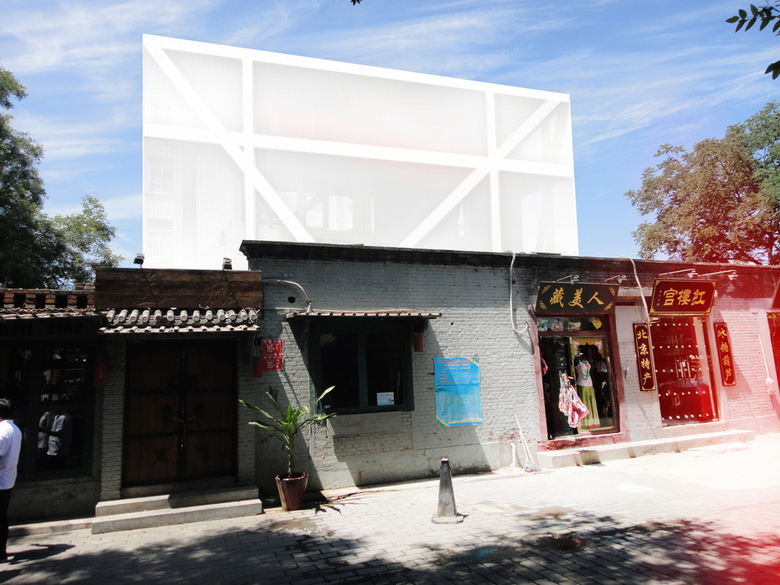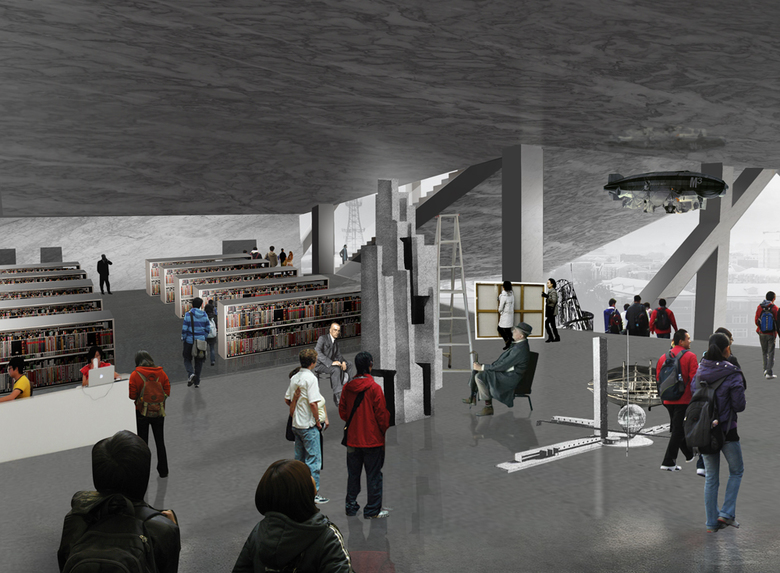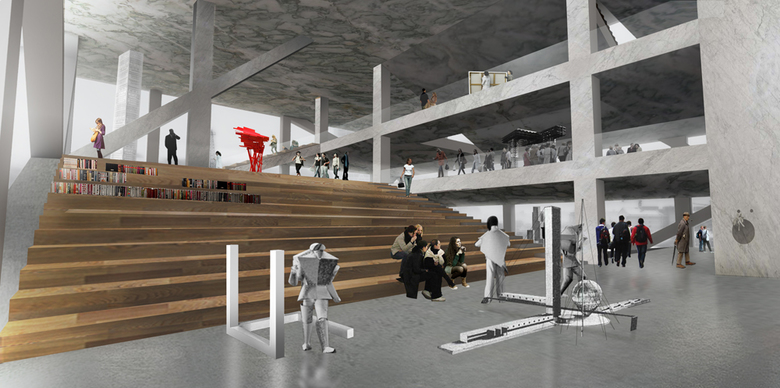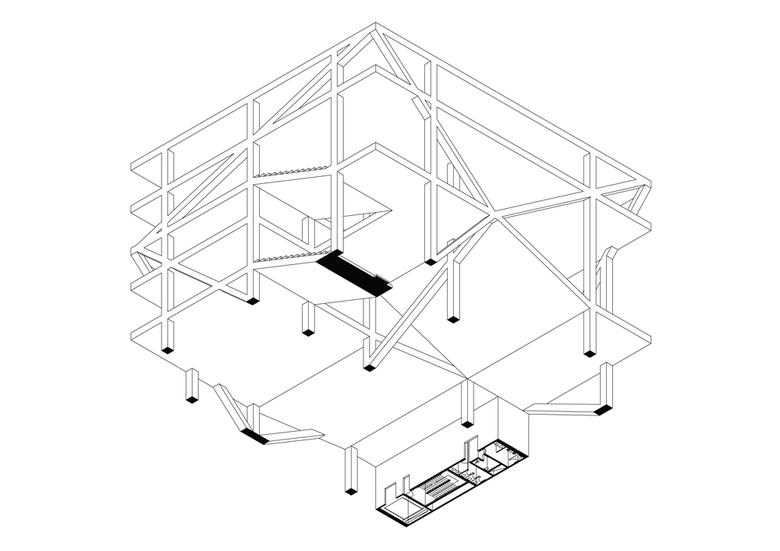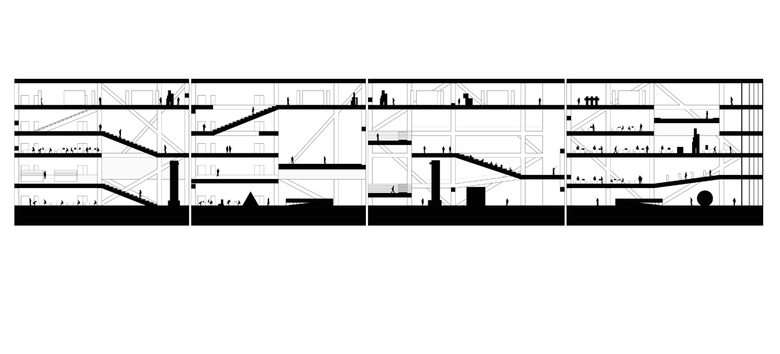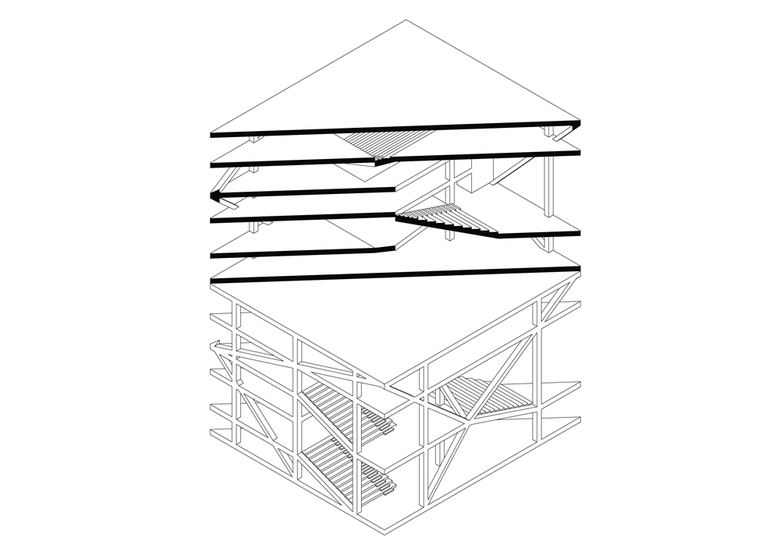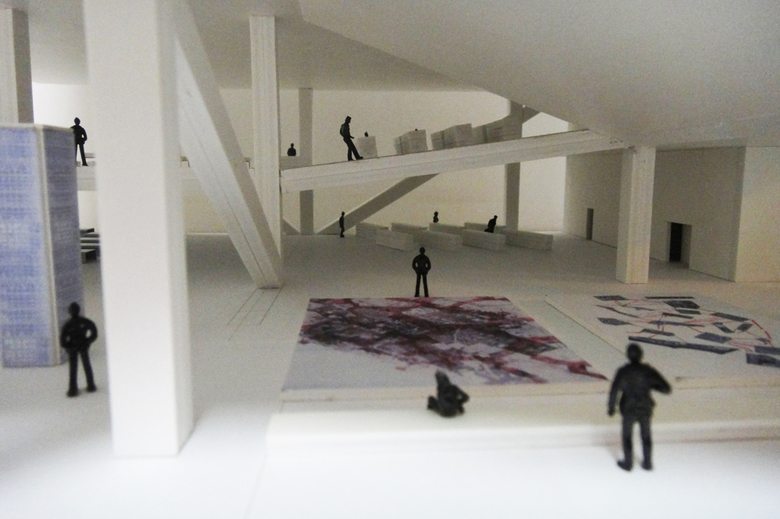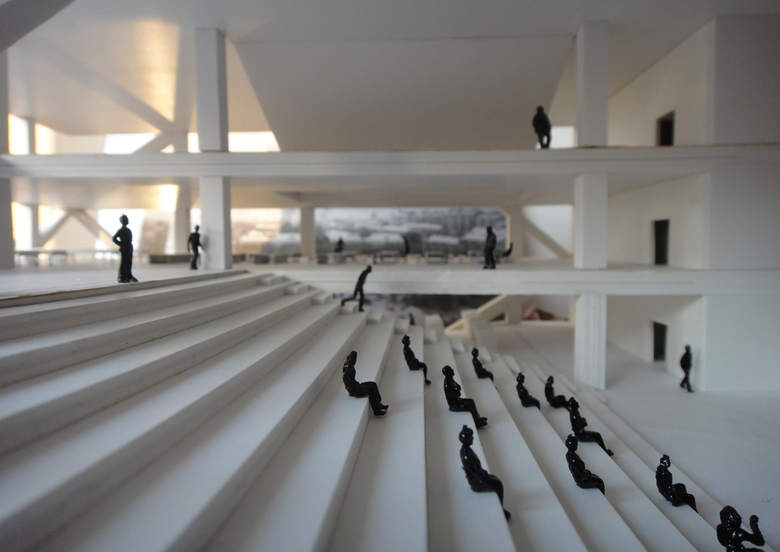Institute of Optimistic Architectures
Voltar à lista de projetos- Educação
- Centros de Estudos
- Institutos + Laboratórios
- Centros de Investigação
- Conference + Congress Centers
In the form of a monolithic cube, the Institute of Optimistic Architectures encloses a network of dynamic spaces of a laboratory for architecture, urbanism and spatial politics in China.
An educational center based on the principle of open learning and cross-disciplinarity, the building arranges the multiple programs in a sequence of open spaces and sloping floors that together form a continuous loop of learning experiences. The Institute of Optimistic Architectures is conceived as an avant-garde institution for the education of environmental and spatial design.
The building includes workshops, lecture and performance halls, libraries, printing rooms, leisure spaces, bookshop, exhibition spaces and a cafeteria.
Rather than exerting all its effort on the redundant futility of contemporary architectural form, the building maintains a brutal level of neutrality in its exterior, while its interior acts as a catalyst of spa
The building is designed based on the five points of a contemporary architecture:
1. Continuous Plan
The plan establishes the limits of the circulation in a building. With the aim of enhancing interrelation between spaces, and creating a continuous exchange between programs, the floor slabs of the building are connected to each other by means of sloping floors that act like lecture and performance halls, workshops and circulation space.
2. Free Section
By distorting the building not in plan, but in section, a new richness of spatial experiences is achieved. What used to be the regime of the generic space because of the repetition of equidistant slabs now becomes a pluralistic assembly of zones of varying spatial potentials.
3. Free Structure
Advancements in engineering allow for the distribution of the structure not only to create optimum spaces, but also to divide and delimit, and to support both the free section and the continuous plan.
4. Free Space
Modern Architecture inherited the free horizontal plan from an industrial era focused on mass production. In an era more concerned with creativity and dynamism, Contemporary Architecture integrates the diagonal slab to the free plan; creating spaces that not only avoid the generic monotony now part of every office building but that enhances new visual and physical connections between spaces that otherwise wouldn’t have any relationship.
5. Wall as fenestration
With more advanced and efficient translucent materials available, a new dialectic can be achieved between the building and its surroundings, as it becomes a possibility to “frame” the views to the context without sacrificing the privacy of the building’s interior. The building façade turns opaque during the hours of the day, and becomes a “lantern” during the night.
Project: Institute of Optimistic Architectures
Status: Study
Year: 2011-12
Location: Beijing, China
Program: Learning Center, workshops, auditoriums, cafeteria, exhibition space.
